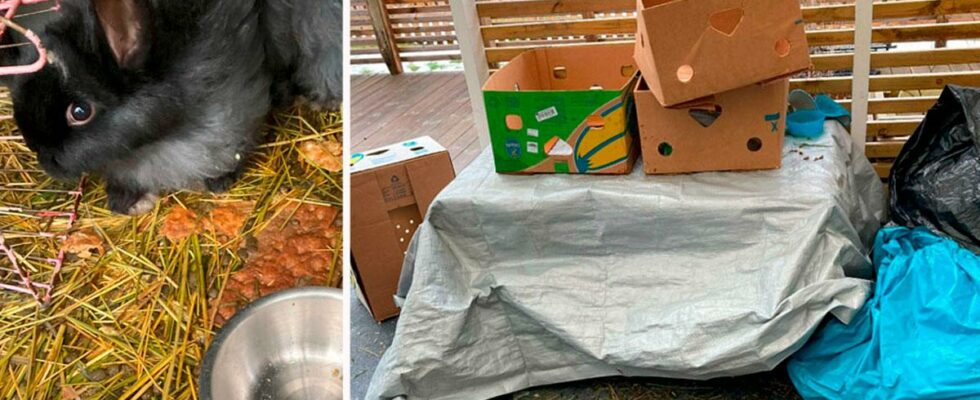unsaveSave
The County Administrative Board knew that the rabbit owner had previously evaded their checks – yet it took six months before they arrived.
Then the rabbits were found under a tarp.
– It was not a priority 1 case, says Maria Arfvidsson at the county board.
ⓘ The summary is made with the support of AI tools from OpenAI and quality assured by Aftonbladet. Read our AI policy here.
Show more
chevron-down
Kronoberg’s county administrative board has the longest processing time for reports against rabbit owners in Sweden. The average processing time for all of Sweden’s county administrative boards is three weeks. Kronoberg’s average is more than double.
On August 1, 2023 the County Administrative Board in Kronoberg receives a report from a property owner, about a person who has just moved out. Everything is emptied in the apartment – but the rabbits remain. The County Administrative Board then searches for the rabbit owner to be able to check how the rabbits are doing. The County Administrative Board knows that this rabbit owner has previously avoided controls from another county. They won’t find the owner for a little over two weeks.
expand-left
full screenDuring the check, several baby rabbits were found, among other things. Photo: Private
Closes the case
On August 22 the county administrative board has found her at a new address. Now Kronoberg’s county board tries to carry out an initial check – but fails because the person is not at home.
The 12th of October the county board fails again. The owner is again not at home, but the county administration sees four rabbits in the garden that lack food and water.
The 13th of December a third attempt is made. The pet owner’s partner opens the door and explains that the pet owner is sleeping because she works at night.
The 15th of January the county administrative board decides to enlist the help of the police in order to carry out the inspection.
The 23rd of January the first check with the police is then carried out. During the check, among other things, several baby rabbits were found in a cage covered by a tarpaulin. They also lacked access to water, and the food had been mixed with their feces.
The County Administrative Board follows up with more checks in the spring and closes the case after the deficiencies have been remedied.
expand-left
full screen
chevron-rightnext
The animals were found when the police lifted the tarpaulin.
1 / 2Photo: Private
“The matter was not urgent”
Although the rabbits did not have food when the report came in, the county administrative board judged that the rabbits were not skinny. Maria Arfvidsson, animal welfare officer at the county board in Kronoberg, believes that the food may have just run out for the day.
– The feeling was that it was at the moment that there was no feed or water, because the animals looked nice. There were dirty boxes, but there were also clean ones.
From that assessment, they did not classify the case as urgent, neither when the pictures came in, during the search for the owner, nor when they found her at the new address.
The cage, which was covered, the county board required the owner to improve.
– There were rabbits in a cage covered with tarpaulin where no daylight came in. It is not OK. But it could not be said that the animals were subjected to any suffering at the caretaker level.
“Police on a Rabbit Incident”
The reason why the county administration waited to get help from the police is also precisely because the case was not urgent.
– We prioritize according to the actual information we have. There must be concrete evidence that an animal is in a bad situation, in order for us to carry out a check. It is not enough to have a gut feeling, says Maria Arfvidsson.
She says they didn’t want to close the case until they were absolutely sure that the improvement after the checks they did was still there.
– 175 days sounds like a long time, but if you turn it around, we have called the police three times on a rabbit matter which, in the order of priority, could actually be ended with a letter.
expand-left
full screen
